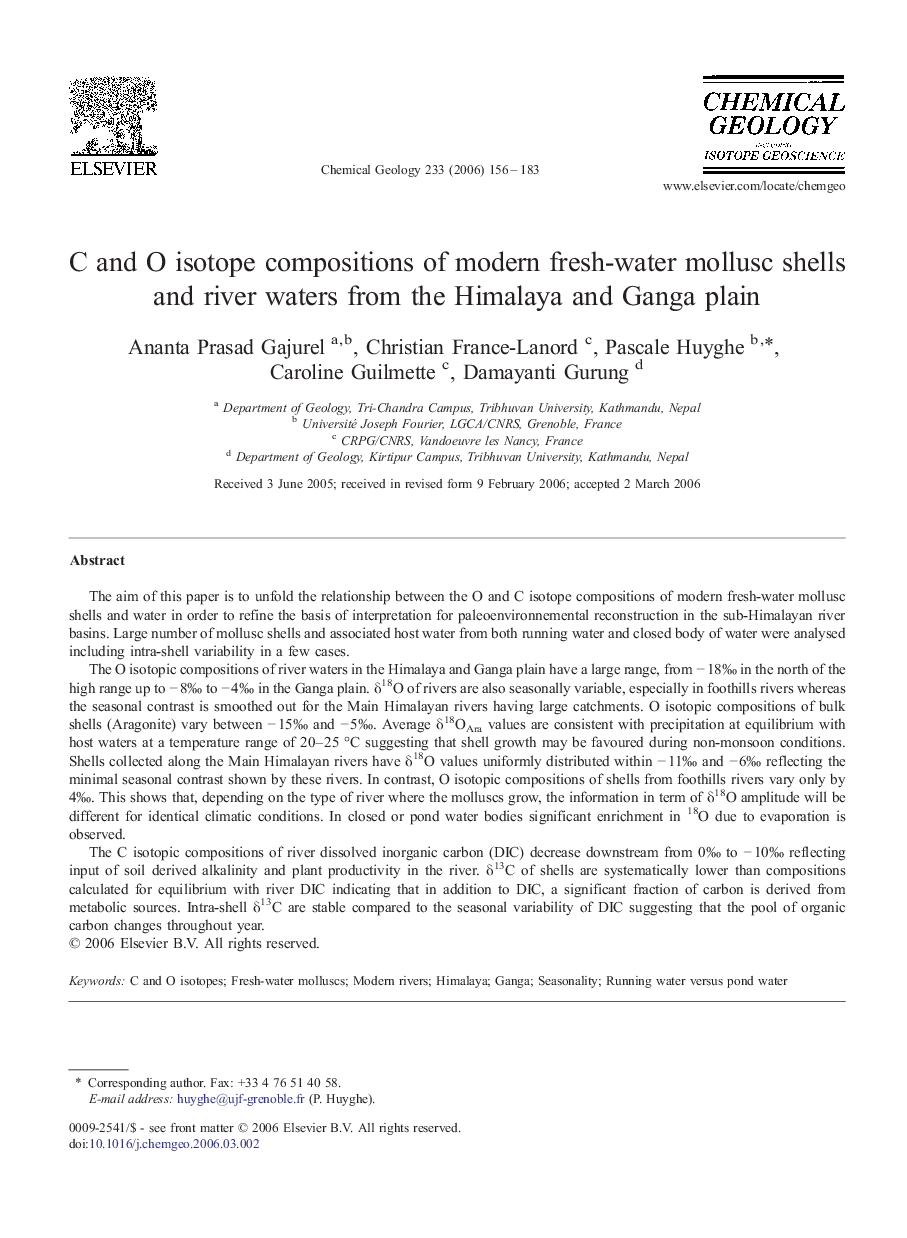| Article ID | Journal | Published Year | Pages | File Type |
|---|---|---|---|---|
| 4701369 | Chemical Geology | 2006 | 28 Pages |
The aim of this paper is to unfold the relationship between the O and C isotope compositions of modern fresh-water mollusc shells and water in order to refine the basis of interpretation for paleoenvironnemental reconstruction in the sub-Himalayan river basins. Large number of mollusc shells and associated host water from both running water and closed body of water were analysed including intra-shell variability in a few cases.The O isotopic compositions of river waters in the Himalaya and Ganga plain have a large range, from − 18‰ in the north of the high range up to − 8‰ to − 4‰ in the Ganga plain. δ18O of rivers are also seasonally variable, especially in foothills rivers whereas the seasonal contrast is smoothed out for the Main Himalayan rivers having large catchments. O isotopic compositions of bulk shells (Aragonite) vary between − 15‰ and − 5‰. Average δ18OAra values are consistent with precipitation at equilibrium with host waters at a temperature range of 20–25 °C suggesting that shell growth may be favoured during non-monsoon conditions. Shells collected along the Main Himalayan rivers have δ18O values uniformly distributed within − 11‰ and − 6‰ reflecting the minimal seasonal contrast shown by these rivers. In contrast, O isotopic compositions of shells from foothills rivers vary only by 4‰. This shows that, depending on the type of river where the molluscs grow, the information in term of δ18O amplitude will be different for identical climatic conditions. In closed or pond water bodies significant enrichment in 18O due to evaporation is observed.The C isotopic compositions of river dissolved inorganic carbon (DIC) decrease downstream from 0‰ to − 10‰ reflecting input of soil derived alkalinity and plant productivity in the river. δ13C of shells are systematically lower than compositions calculated for equilibrium with river DIC indicating that in addition to DIC, a significant fraction of carbon is derived from metabolic sources. Intra-shell δ13C are stable compared to the seasonal variability of DIC suggesting that the pool of organic carbon changes throughout year.
